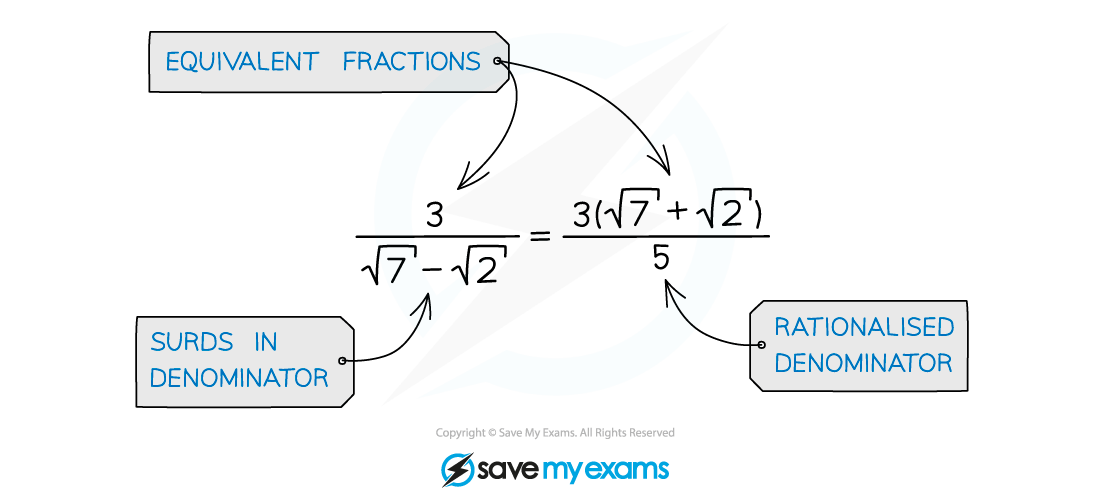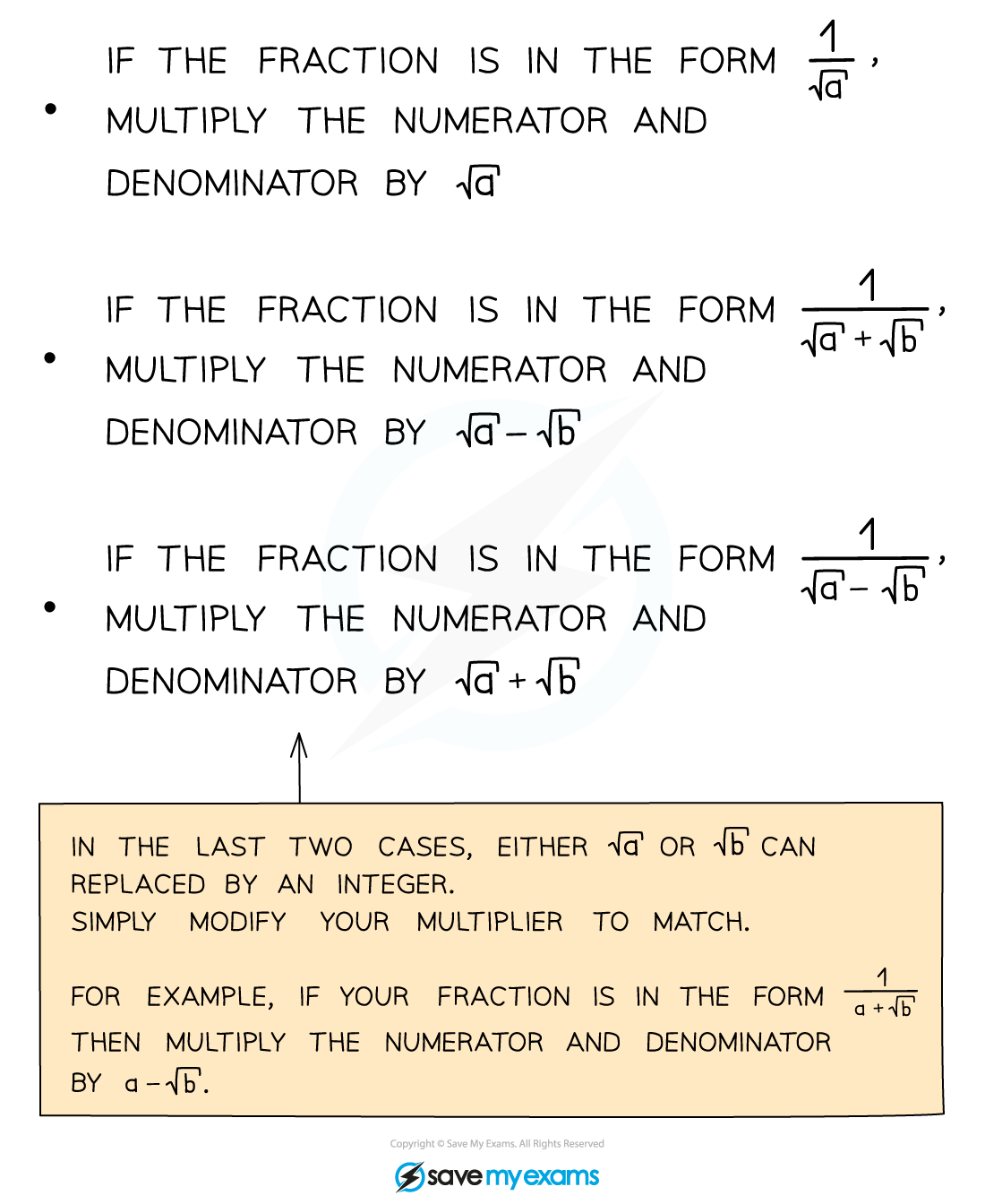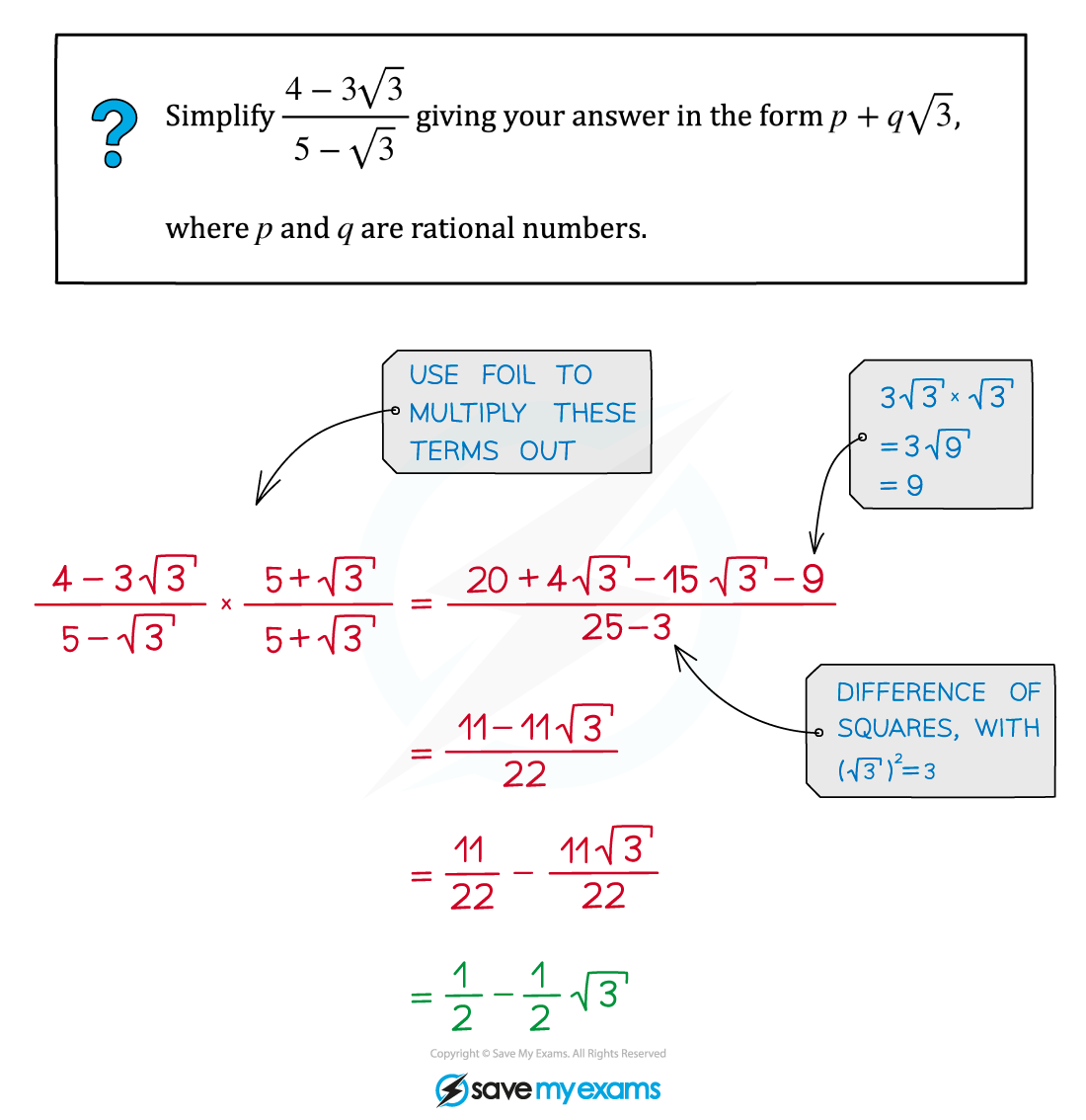- 翰林提供学术活动、国际课程、科研项目一站式留学背景提升服务!
- 400 888 0080
Edexcel A Level Maths: Pure:复习笔记2.1.3 Surds - Rationalising the Denominator
Surds - Rationalising the Denominator
What does it mean to rationalise a denominator?
- Rationalising a denominator changes a fraction with surds in its denominator, into an equivalent fraction where the denominator is a rational number (usually an integer) and any surds are in the numerator

- There are three cases you need to know how to deal with when rationalising denominators:

Exam Tip
- If an exam question asks you to give an answer, for example, "in the form p + q√3 , where p and q are rational numbers", this does NOT mean that p and q have to be integers, or positive!
- Remember: both integers and fractions (both positive and negative) are rational numbers
Worked Example

转载自savemyexams

最新发布
© 2025. All Rights Reserved. 沪ICP备2023009024号-1









